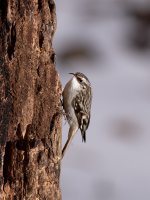PaulCountyDurham
Well-known member

Hi Paul, good for you. I would encourage you to then keep the setting of taking both jpg and raw in the camera (unless this slows the camera down too much). You may find in a little while that you would really like to learn more about post-processing and then you would likely want to have the raw images available.
Niels
Hi Niels,
Cheers. As you suggest, I haven't written off RAW at this stage. The reason being that I don't know how they compare under varying conditions/scenarios. So, until I've taken a whole range of pictures in different light and at different times, I'll compare both and see how they go.
At some stage I will be buying some decent post-processing software but I think I'm a while off that yet as I'd like to understand the basics of what settings work best in varying conditions/scenarios before I move on to anything else.
The biggest difference I've found at the moment is moving the aperture to 3.5 to 4.5 which in limited situations turned out pictures much more to my liking than at 2.8. It's raining pretty much constantly here at the moment, so I'm using the time on my guitar but from Thursday afternoon we get better weather for a few days and so it will be a case of taking pictures of any bird/as many as possible, utilising various settings, and see how they turn out at different times of the day: cloudy versus sunny, both fine jpeg and RAW.
Thanks for the advice,
Paul






